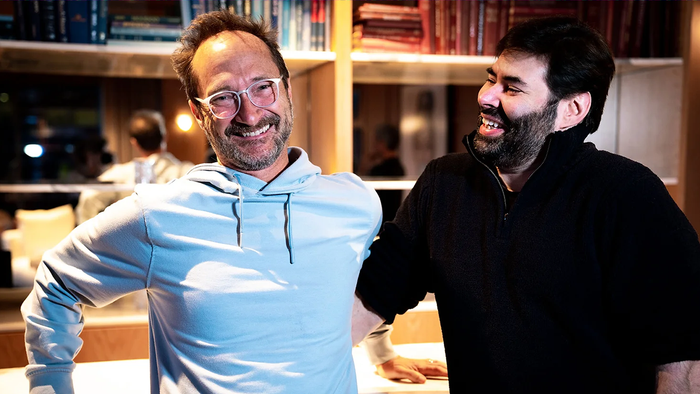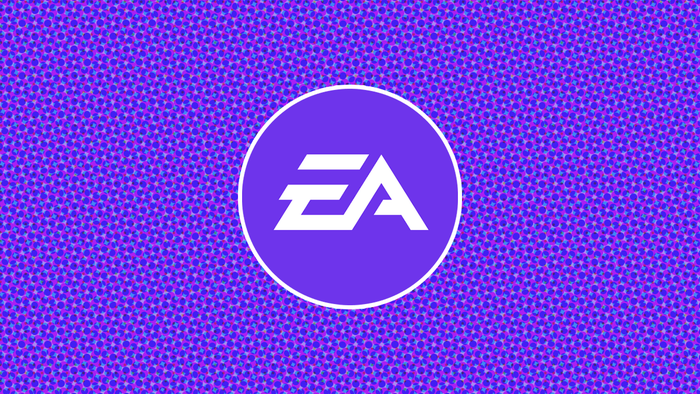The 'trial and error' development of Sound Shapes
We catch up with Queasy Games' Jon Mak and Shaw-Han Liem on the ongoing development of Sound Shapes, discussing the exciting potential Vita brought to a complex, occasionally "painful" concept refinement.

Queasy Games' upcoming Vita title Sound Shapes, the brainchild of a collaboration between Jon Mak (Everyday Shooter) and indie electronic musician Shaw-Han Liem is fairly ambitious and broad of scope -- it wants to put music-making tools into players' hands through the familiar language of a platformer game. It's hard to tell when it'll be done, and there are a number of features no one's yet seen, Mak and Liem tell Gamasutra. At a recent PlayStation event, the pair showed off levels with music contributed by Deadmau5 just for the first time, evidence that there may a lot up Sound Shapes' sleeve. Trying to get music and game not only to work together, but to encourage one another, has been a complex undertaking for the pair, but also a rewarding one. "When people that aren't musicians try the game out and realize, through creating music in the game world where it's not intimidating, where it's presented to you in a way that is friendly... and it's like 'oh, I can do this, this isn't so scary'... that was one of the most motivating things about the project for us," says Liem. Mak says that enabling new audiences to understand and enjoy something that seems complicated from afar is just a matter of making tools friendly and accessible to them. "When you download AAA demos and you fire it up, it shows you a picture of a controller, and every single button is mapped to a thing," he says. "If you can understand super crazy, complicated games like that, then surely you can write beats, too." "This music thing isn't mystical or anything," Mak adds. "You can learn it like you learn to play Call of Duty or Gears of War." The complex synchronicity between sonic platformer and music tool wasn't exactly meticulously plotted; the idea simply arose as a natural consequence of Liem and Mak's desire to work together. "We didn't really have a template... maybe that's why it's taken this long," says Mak. "I guess we sort of built up this history of projects that we never showed anyone -- prototypes, basically, that sort of culminated in what is now Sound Shapes," he adds. The decision to make the platforming game mechanics simple and accessible was intentional: "We wanted to base it on something that video game players know about; platformers are pretty ubiquitous... and the core thing where we can weave music through a video game was largely trial and error." Actually, the pair says finding the balance between game design and music experience was at times "painful." Explains Mak: "You come up with a really cool musical concept and it breaks the game; you come up with a really cool game thing and it breaks the music. So it was about trial and error and compromise." Sound Shapes marks Liem's first game project. "I had an interest in games, and through the Toronto indie scene I've been introduced to various people doing pretty interesting things with various projects," he explains. Beginning to actually work together with Mak was an exciting opportunity for Liem to step outside his comfort zone. "There was a possibility to find something that was kind of new and fresh," he reflects. "That aspect of the project was what allowed us to sort of find new ways of looking at the things we were thinking about before. Not just music and composition and using computer tools to create music, but thinking about in in a game context, all kinds of new challenges and opportunities came along with that." "We basically locked ourselves in a basement for two years and proposed idea after idea until something cool came out of it -- that's the only way we would have been able to come up with what we came up with," he adds. Interestingly, Sound Shapes prototypes hadn't yet had platform in mind. Sony approached Queasy Games once the concept was already underway. That opened up a brand new dimension in particular for Sound Shapes' creation tools, when suddenly the pair realized there'd be an entire wealth of new features that could be leveraged. By that time, the core of the game had been solidified, so the pair could be selective about what Vita features fit nicely with the game they had already envisaged: "We were able to cherry-pick the things that really added something to the game and do those," says Liem. The Vita even had some spiritual traits in common with Sound Shapes: "If you think about it, Sound Shapes is like a platformer that makes music, and the Vita is like a touch screen device that has a D-pad. We sort of unconsciously split it up that way," Mak says. "The game part of Sound Shapes is D-pad, and the music creation part is touch screen. I find it interesting the way that worked out, these two opposing ideas in the software coming together in the two opposing ideas in the hardware," he adds. "When I was a kid and I wrote my first song, it was super empowering," Mak says. "It was super reassuring to realize, 'hey, that wasn't so hard.' I hope that Sound Shapes will do that to other people... it's sad to go through your whole life without having the feeling of creating something and then getting to show people."
About the Author(s)
You May Also Like













